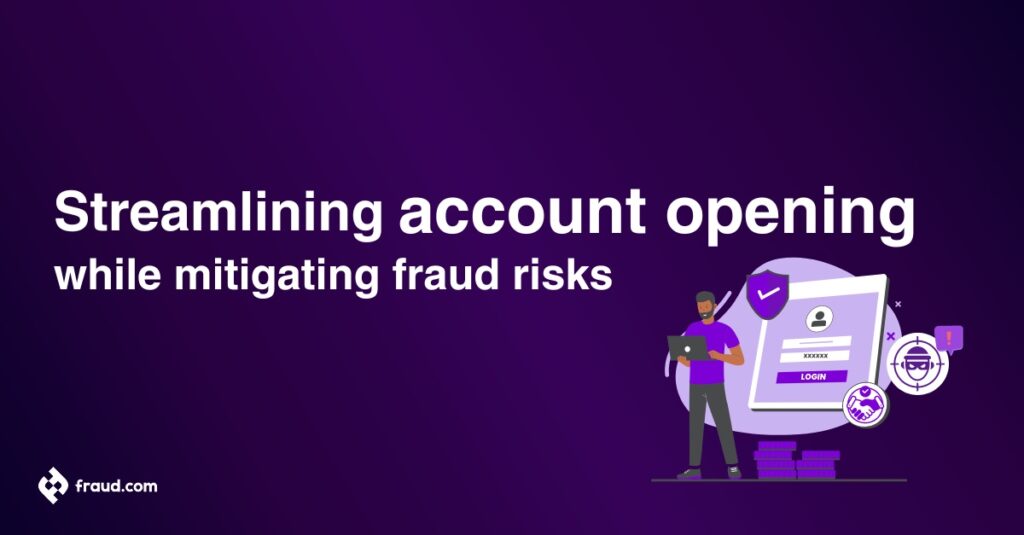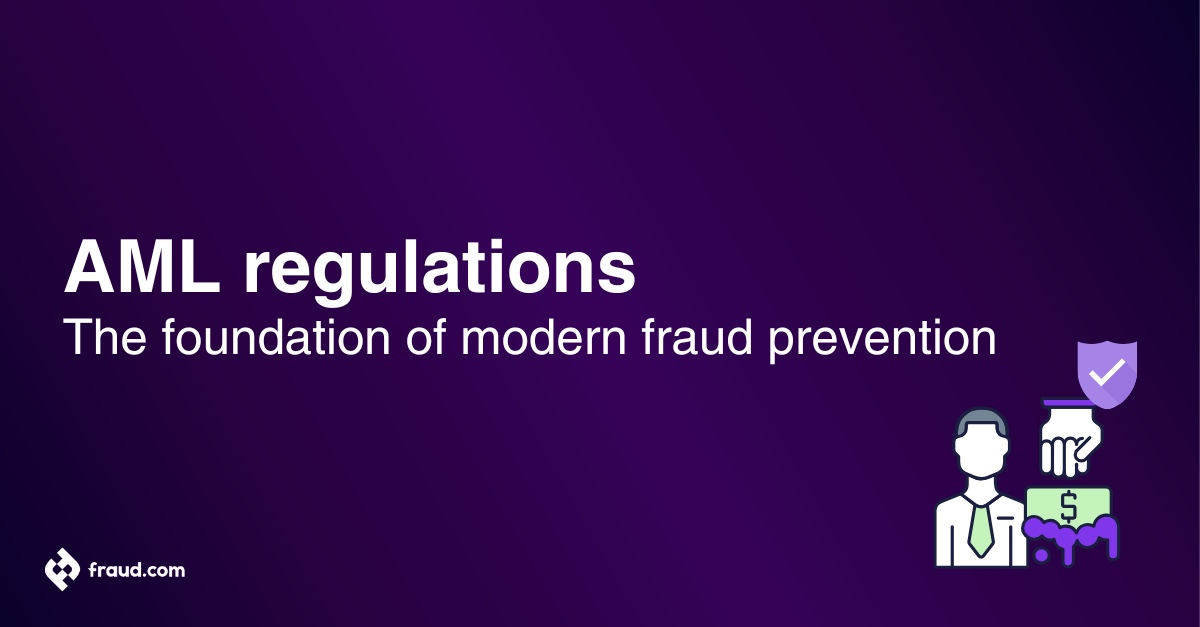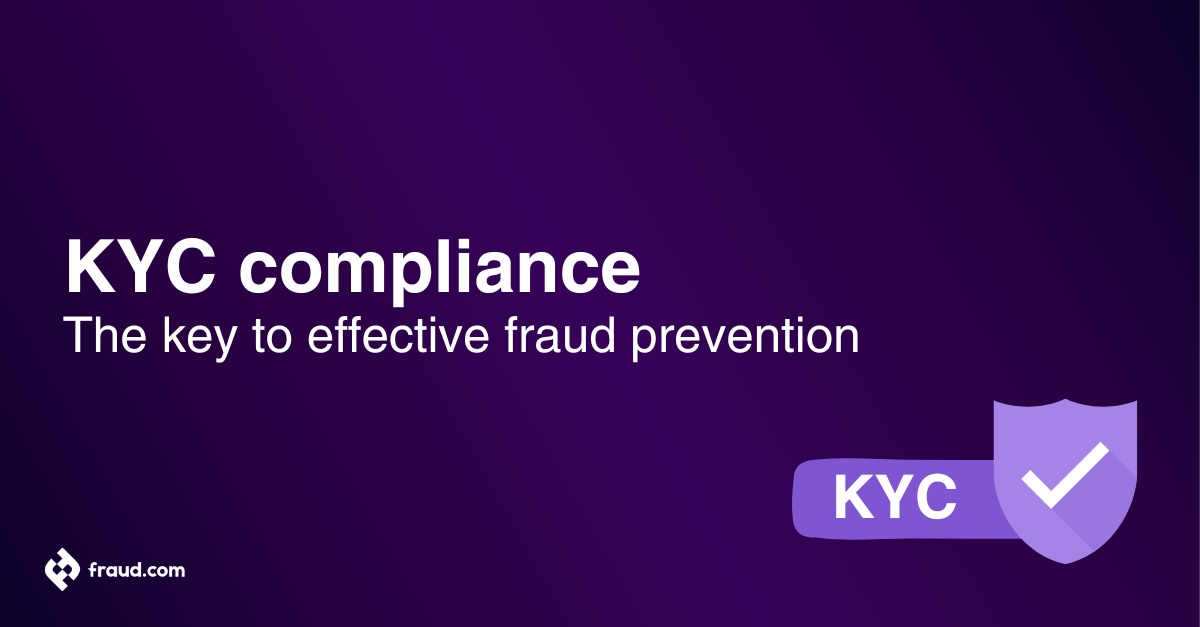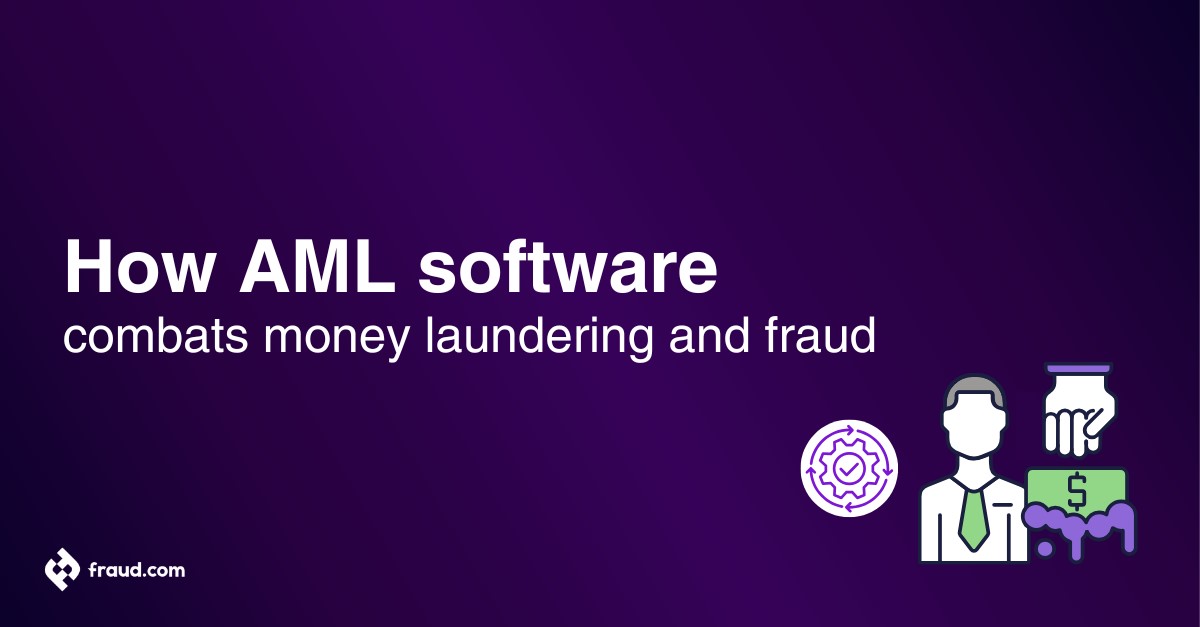In today’s competitive environment, creating seamless customer experiences is more critical than ever. However, prioritizing convenience must not come at the cost of security, especially in account opening processes – the crucial gateway to customer interaction. As organizations strive to reduce friction and enhance customer onboarding, they must remain vigilant against increasingly sophisticated fraudsters constantly seeking out vulnerabilities.
This article explores the dual imperatives of streamlining account opening procedures and implementing robust anti-fraud measures. We will delve into the latest technologies, best practices, and strategic approaches that enable businesses to offer a smooth onboarding journey without compromising security. Whether you are a financial institution, an e-commerce platform, or a service provider, understanding how to balance these crucial elements will position you to build trust, enhance user satisfaction, and safeguard your operations.
Table of Contents
ToggleWhat is account opening?
Account opening is the crucial process that initiates a formal relationship between a customer and a business. It involves creating a user profile, verifying identity, and granting access to services or products. Whether for a bank, online retail platform, telecommunications provider, or any service-oriented business, this initial interaction sets the stage for the entire customer journey.
Account opening is more than administrative; it’s a critical phase where ensuring a smooth user experience and implementing robust fraud prevention measures are essential. Achieving this balance is increasingly challenging in an era marked by high customer expectations for seamless service and persistent threats from evolving fraud tactics. Understanding the intricacies of account opening is crucial for businesses aiming to deliver secure, accessible services and build strong, trustworthy customer relationships.
Steps in the account opening process
A well-structured account opening process enhances customer satisfaction and protects your organization against potential fraud. While specific procedures vary across industries and institutions, the fundamental steps generally remain consistent. Here is an overview of the essential stages involved in the account opening process:
1. Information collection
Gather necessary personal and financial information from the applicant, including:
- Personal details: Full name, date of birth, address, and contact information.
- Identification documents: Government-issued ID, passport, or driver’s license.
- Financial information: For financial institutions, this may include financial statements, tax identification numbers, or employment details.
2. Identity verification
Prevent fraudulent activities by verifying the applicant’s identity through:
- Document verification: Cross-checking submitted identification documents for authenticity.
- Biometric verification: Using facial recognition or fingerprint scanning to confirm the applicant’s identity.
- Two-Factor Authentication (2FA): Requiring Two-Factor Authentication (2FA) or multiple forms of verification, such as SMS codes or email confirmations.
3. Background check
Assess the risk associated with each applicant by conducting a thorough background check, which may involve:
- Credit check: Reviewing the applicant’s credit history to gauge financial reliability.
- Criminal record check: Ensuring the applicant doesn’t have a history of fraudulent activities or other criminal behaviour.
- Sanctions list screening: Comparing the applicant’s details against global watch lists and sanctions databases.
4. Approval or rejection
Based on the information collected, verification, and background checks, decide to approve or reject the application. Factors influencing this decision include:
- Compliance with regulatory standards: Ensuring the applicant meets all legal and regulatory requirements.
- Risk Assessment: Evaluating the level of risk the applicant poses to the organization.
- Consistency and Accuracy: Confirming that all provided information is accurate and consistent.
5. Account setup
For approved applications, set up the account by:
- Assigning account credentials: Providing the applicant with login details or account numbers.
- Activating services: Enabling the appropriate services or products associated with the account.
- Customer onboarding: Offering guidance on how to use the account, including security best practices and troubleshooting tips.
6. Ongoing monitoring
Implement continuous monitoring through:
- Regular audits: Periodically reviewing account activities to detect any anomalies.
- Fraud detection systems: Using advanced fraud detection analytics and machine learning to identify suspicious behaviours in real-time.
- User education: Continuously educating account holders about phishing schemes, identity theft, and other fraud risks.
By meticulously following these steps, organizations can create an efficient and secure account opening experience that fosters trust and minimizes fraud risks. Balancing the need for a streamlined process with stringent security measures is crucial for successful account management, making it a key focus for today’s digitally-driven businesses.
Types of account opening
Account opening processes vary significantly based on the type of account and the specific needs of both the customer and the institution. Here are some primary types:
Personal accounts
Savings accounts: Designed for individuals to save money and earn interest. The process typically includes verifying personal identification and proof of address.
Current/Checking accounts: Used for regular transactions like payments and withdrawals. These accounts often require employment details and financial history checks.
Business accounts
Small business accounts: Tailored for small to medium-sized enterprises (SMEs), these accounts generally require business registration documents, tax identification numbers, and details of business operations.
Corporate accounts: Intended for larger corporations, these accounts typically involve rigorous scrutiny, including detailed financial statements, organizational documents, and board resolutions.
Specialized accounts
Investment accounts: For customers looking to invest in stocks, bonds, mutual funds, and other securities. These accounts often require detailed financial profiling and risk assessment.
Trust and fiduciary accounts: Managed on behalf of a third party, such as a minor or beneficiary. Opening these accounts usually necessitates legal documentation that establishes the trust or fiduciary relationship.
Student accounts: Simplified accounts designed for students, often with lower fees and minimum balance requirements. Proof of enrollment in an educational institution is usually required.
By understanding the different types of accounts, institutions can tailor their account opening processes to better serve their customers’ specific needs.
Who uses account opening
Account opening is a fundamental process used by a wide range of institutions and individuals across various sectors. Here are some key users:
Financial institutions
- Banks: Traditional and online banks rely on account opening processes to onboard new customers for checking, savings, and other types of accounts.
- Credit unions: Similar to banks, credit unions use account opening to welcome new members and provide them with financial services.
- Investment firms: These firms open accounts for clients looking to invest in stocks, bonds, mutual funds, and other securities.
Online and mobile banking services
- Digital-only banks: These banks operate entirely online and require efficient digital account opening processes to attract and retain customers.
- Fintech companies: Financial technology companies use account opening to provide services such as mobile payments, peer-to-peer lending, and digital wallets.
E-commerce platforms
- Online retailers: E-commerce businesses require account opening for customers to create profiles, track orders, and manage payments securely.
- Marketplaces: Platforms like Amazon, eBay, and Etsy use account opening to onboard sellers and buyers, facilitating secure transactions.
Telecommunications providers
- Mobile network operators: These companies open accounts for customers purchasing phone plans, managing billing, and accessing customer service.
- Internet service providers: ISPs use account opening to register new users, set up services, and manage customer accounts.
Utility companies
- Electricity and gas providers: These companies require account opening for new customers to set up service, manage billing, and receive customer support.
- Water and waste management services: Similar to other utilities, these providers use account opening to register customers and manage service delivery.
Subscription-based services
- Streaming services: Platforms like Netflix, Spotify, and Hulu use account opening to enroll subscribers, manage payments, and personalize user experiences.
- Software-as-a-Service (SaaS) providers: SaaS companies require account opening to grant access to their software, manage user subscriptions, and offer support.
Government agencies
- Social services: Government agencies use account opening to provide citizens with access to social security, unemployment benefits, and other public services.
- Tax authorities: Tax agencies require account opening for individuals and businesses to file taxes, track payments, and manage records.
Educational institutions
- Schools and universities: Educational institutions use account opening for students and staff to access online resources, manage coursework, and communicate with faculty.
- Online learning platforms: Platforms like Coursera and Udemy require account opening to enroll students, track progress, and issue certifications.
By understanding who uses account opening, businesses and institutions can tailor their processes to meet the specific needs of their customers, ensuring a seamless and secure onboarding experience.
Data security and privacy in account opening
In today’s digital landscape, ensuring data security and privacy during the account opening process is crucial. Financial institutions and organizations must implement stringent measures to protect sensitive customer information from breaches and unauthorized access. Here are key strategies to enhance data security and privacy:
Data encryption: Use robust encryption methods for data both at rest and in transit to keep sensitive information secure from interception and tampering.
Secure authentication methods: Implement multi-factor authentication (MFA) and biometric verification to safeguard account access. Multiple layers of verification significantly reduce the risk of unauthorized access.
Access control: Establish strict access control policies to ensure only authorized personnel can access sensitive customer data. Regularly review and update access permissions to prevent internal data breaches.
Data minimization: Collect only the necessary information required for account opening and processing. Limiting data collection reduces exposure in case of a breach.
Regular audits and monitoring: Conduct regular security audits and continuous monitoring to identify and address vulnerabilities. This proactive approach helps in early detection and mitigation of potential security threats.
Compliance with regulations: Adhere to data protection regulations such as GDPR, CCPA, and other relevant laws. Regularly update policies and practices to ensure compliance.
Account opening via mobile registration
Account opening via mobile registration has revolutionized the the customer onboarding processes, specially for the financial industry by providing customers with convenient access to banking services directly from their smartphones. This streamlined process allows users to complete the necessary steps for opening an account swiftly and securely, leveraging the capabilities of mobile devices for identity verification and document submission. Financial institutions and other organizations benefit from increased efficiency and customer satisfaction, as mobile registration offers a seamless digital onboarding experience that meets the demands of today’s digital consumers.
The evolution of account opening in online and mobile banking
Online and mobile banking have revolutionized account opening, transforming it from a cumbersome, paper-heavy process into a streamlined, digital experience. Technological advancements, changing customer expectations, and improved security measures have driven this evolution. Here’s a brief overview of how account opening has evolved:
Early days: Manual and in-person procedures
Opening a bank account used to require multiple visits to a branch, extensive paperwork, and a lengthy waiting period. This process was time-consuming and prone to errors, and customers had to review card terms and conditions, understand account fees and overdraft fees, and sign a deposit account agreement.
Digital transformation: Online banking emergence
The internet introduced online banking, reducing the need for physical branch visits. Customers could fill out application forms and submit identification documents online. Despite these advances, final approval often still required in-person steps to review interest rates and liability for unauthorized transactions.
Mobile revolution: Anytime, anywhere access
With smartphones, mobile banking apps offered unprecedented convenience. Customers could open accounts, review debit card terms, and access various banking services on the go, making the process almost instantaneous. This shift also allowed customers to easily bring their accounts to a positive balance and manage overdraft fees more efficiently.
Advanced technologies: Biometrics and AI
Today, technologies like biometrics and AI have refined the account opening process. Fingerprint scanning, facial recognition, and real-time data analysis help simplify identity verification and quickly detect fraud. Financial institutions, including those that are NA member FDIC, registered investment advisers, and registered broker-dealers, use these technologies to enhance security and streamline onboarding.
Compliance and regulation: Navigating complexity
As digital account opening has advanced, regulatory requirements have increased. Financial institutions must incorporate Know Your Customer (KYC) and Anti-Money Laundering (AML) protocols, adding complexity to the process. Ensuring compliance with these regulations is essential for services LLC and other entities.
Customer-centric innovations: Enhancing user experience
Banks are continually innovating to make account opening user-friendly. Instant verification, interactive chatbots, and personalized onboarding journeys enhance the customer experience and build trust. These innovations also involve clear communication of terms related to interest rates, account fees, and business day definitions.
Future outlook: Blockchain and decentralized identity
Looking ahead, blockchain and decentralized identity management promise further improvements. Blockchain can provide secure, immutable identity verification records, while decentralized identity solutions offer greater data control for customers. These technologies will help institutions manage compliance and regulatory requirements more effectively.
The evolution of account opening in online and mobile banking showcases the interplay between technological innovation and customer demand. Financial institutions must continue to create secure, efficient, and frictionless account opening experiences while staying ahead of evolving fraud tactics and regulatory requirements.
Instant approval in account opening
Instant approval in account opening has become a game-changer for organizations, but mainly for financial institutions. Leveraging advanced technologies such as artificial intelligence and machine learning, banks can quickly verify applicant information, assess risk, and approve new accounts in minutes. This process not only enhances customer satisfaction by providing immediate access to banking services but also improves operational efficiency for institutions. Instant approval helps meet the growing demand for rapid, seamless financial services in the digital age.
Best practices for fraud prevention in account opening
In the quest to streamline account opening while mitigating fraud risks, financial institutions must implement robust strategies to prevent fraudulent activities. Here are some best practices to consider:
Comprehensive identity verification
Ensure thorough verification of applicant identities using multiple methods:
- Document verification: Use advanced tools to authenticate government-issued IDs, passports, and other identification documents.
- Biometric verification: Incorporate biometric technologies like facial recognition and biometric fingerprint authentication for additional security.
- Two-Factor Authentication (2FA): Require an extra layer of verification, such as SMS codes or email confirmations, to prevent unauthorized access.
Real-time data analysis
Leverage real-time data analysis to detect and prevent fraud during the account opening process:
- AI and Machine Learning: Utilize AI and machine learning algorithms to analyze application data in real time, flagging suspicious patterns and potential fraud.
- Behavioral Analytics: Monitor and analyze user behavior to identify anomalies that could indicate fraudulent activities.
Enhanced security measures
Implement advanced security measures to protect both the institution and the customers:
- Encryption: Ensure all sensitive data is encrypted during transmission and storage.
- Secure APIs: Use secure application programming interfaces (APIs) to protect data exchanges between systems.
- Regular security audits: Conduct frequent security audits to identify and address vulnerabilities.
Regulatory compliance
Stay compliant with local and international regulations to reduce fraud risks:
- Know Your Customer (KYC): Adhere to KYC guidelines to verify customer identities and assess risks.
- Anti-Money Laundering (AML): Implement AML protocols to detect and prevent money laundering activities.
- Sanctions list screening: Screen applicants against global watch lists and sanctions databases.
Continuous monitoring
Maintain ongoing vigilance even after account opening:
- Transaction monitoring: Continuously monitor account transactions for unusual or suspicious activity.
- Fraud detection systems: Implement advanced fraud detection systems that use analytics and machine learning to identify and respond to threats in real time.
- Regular reviews: Conduct periodic reviews of account activities to ensure continued compliance and security.
Customer education
Educate customers on how to protect themselves from fraud:
- Security awareness campaigns: Run campaigns to inform customers about common fraud schemes and how to avoid them.
- Phishing alerts: Send regular alerts about phishing attempts and other fraud threats.
- Guidance on secure practices: Provide guidelines on creating strong passwords, recognizing suspicious emails, and safeguarding personal information.
By implementing these best practices, financial institutions can significantly reduce the risk of fraud during the account opening process. Balancing efficiency and security is essential to protect both the organization and its customers while fostering trust and confidence in the digital banking experience.
Preventing fraud during account opening with Udentify and aiReflex
Preventing fraud during account opening is crucial for maintaining the integrity and security of financial institutions. Tools like Udentify and aiReflex play a pivotal role in achieving this.
Udentify leverages advanced biometric verification methods such as including facial recognition to ensure that the person opening the account is who they claim to be. This technology significantly reduces the risk of identity theft and fraudulent account creation.
aiReflex, on the other hand, adopts artificial intelligence and machine learning to analyze application data in real-time. It detects unusual patterns and flags potential fraudsters before they can exploit vulnerabilities. By continuously learning and adapting to new fraud tactics, aiReflex provides robust protection against evolving threats.
Together, Udentify and aiReflex offer a comprehensive solution for secure and efficient account opening, balancing the need for a seamless user experience with stringent fraud prevention measures. These tools help financial institutions and other organizations build trust, ensure compliance with regulatory requirements, and protect both their customers and their business from fraud.
Account opening FAQs
| Question | Answer |
|---|---|
| What is account opening? | The process of creating a user profile, verifying identity, and granting access to services or products, setting the stage for the customer relationship. |
| What are the steps in account opening? | Collect information, verify identity, conduct background checks, approve or reject the application, set up the account, and perform ongoing monitoring. |
| What types of accounts can be opened? | Personal accounts (savings, checking), business accounts (small business, corporate), and specialized accounts (investment, trust, student). |
| Who uses account opening processes? | Financial institutions, online and mobile banking services, e-commerce platforms, telecom providers, utility companies, subscription services, government agencies, and educational institutions. |
| How is data security and privacy maintained? | Through data encryption, secure authentication, access control, data minimization, regular audits, and compliance with regulations like GDPR and CCPA. |
| What is account opening via mobile registration? | A streamlined digital onboarding process that allows customers to open accounts via smartphones, enhancing convenience and security. |
| How has account opening evolved? | From manual, paper-heavy procedures to digital, seamless experiences using biometrics and AI for improved security and efficiency. |
| What is instant approval in account opening? | Using AI and machine learning to quickly verify information, assess risk, and approve new accounts, enhancing customer satisfaction and operational efficiency. |
| How can fraud be prevented during account opening? | By implementing identity verification, real-time data analysis, advanced security measures, regulatory compliance, continuous monitoring, and customer education. |
| What documents are needed for account opening? | Typically, government-issued ID, proof of address, and financial information. |
| How long does the account opening process take? | With digital methods, it can take minutes to a few hours; traditional methods may take several days. |
| Can I open an account online? | Yes, many institutions offer online account opening through their websites or mobile apps. |
| What is KYC in account opening? | Know Your Customer (KYC) is a process of verifying the identity of clients to prevent fraud and ensure compliance with regulations. |
| Why was my account opening application rejected? | Possible reasons include incomplete information, failed identity verification, or not meeting eligibility criteria. |









